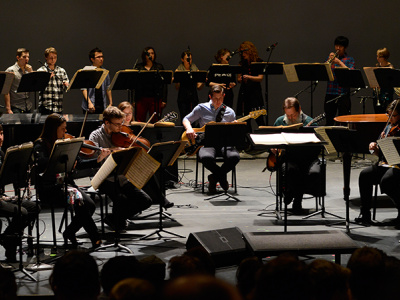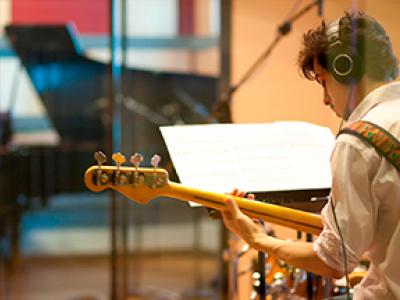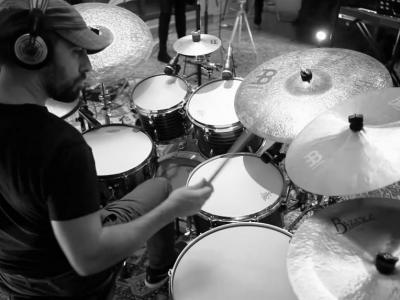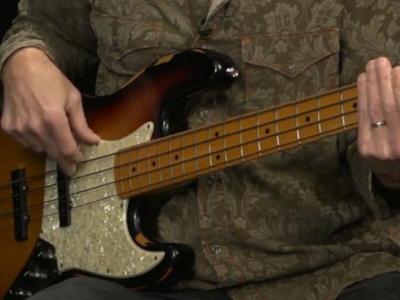What does a Pit Orchestra Musician do?
The pit orchestra takes its name from the lowered area in front of a stage—the orchestra pit—where the musicians and conductor are situated during a theatrical performance. Reading from a score, pit orchestra musicians play their parts with expert precision in order to accompany the onstage actors, dancers, and singers. If done well, the end result is a collaborative performance that's more than the sum of its parts.
Some pursue this job as a long-term career, while others treat it as another freelance music gig, combining it with touring, general business, or session work.
While playing in a pit orchestra is in many ways similar to playing in a full-sized orchestra—both require music reading skills, the ability to synchronize with a group, and near-flawless playing—there are a number of differences between these two jobs. For one thing, due to budget and size concerns—which are exacerbated in touring productions—pit orchestra musicians are often asked to play multiple instruments. A reed player may be expected to double on clarinet, flute, and saxophone, for example, or a guitarist to handle ukulele, banjo, and mandolin duties on top of acoustic and electric guitars. For another, rehearsal time tends to be quite limited for pit orchestras and practice sessions are often largely devoted to coordination and synchronization with the performers. Depending on the style of the show and score, a pit orchestra could take any form, from a rock band or symphony orchestra to a single pianist.
At a Glance
Most pit orchestra musicians are consistent, high-level performers trained in conservatory and university music programs. Some pursue this job as a long-term career, while others treat it as a freelance music gig, combining it with touring, general business, or session work. Experienced and successful pit orchestra musicians might go on to become musical theater music directors, fill out a television band, or join the ranks of an orchestra. Rarely, an extremely well-connected musician can also become a music contractor, placing other musicians in pit and session orchestras.
Finding work in a pit orchestra is almost exclusively a function of networking and referrals. Competition is fierce, especially in New York, where long-term jobs abound and the local musicians’ union stipulates that a player is required to be in the pit for only fifty percent of a show’s scheduled performances each year—provided they find their own substitutes. Subbing in is a common way for aspiring pit orchestra musicians to get their first experience on a big show.
- Deep instrumental proficiency
- Multi-instrumentalism
- Reading music notation
- Wide repertoire
- Collaboration
- Reliability
- Flexibility
- Networking
Pit orchestra musicians are not soloists. While they may perform an involved or public-facing role in certain theatrical performances, their chief job is to expertly accompany without drawing attention away from the dramatic, narrative, or visual action. This job requires humility, focus, flexibility, the ability to synchronize with and accompany actors and dancers, and the stamina and temperament to play the same music eight or nine times per week. Additionally, pit orchestra musicians are expected to master their parts on their own time, a task which requires time management and organizational skills.
Working as a pit musician offers a rare mix of security and freedom, thanks to a steady paycheck and the luxury of free time: a day’s work might only be two or so hours long. As such, it's an excellent night job for any performing musician pursuing related goals, such as joining an orchestra or television band.
Players who have been hired for a touring show, however, will spend long stretches on the road. A yearlong national tour might stop for six weeks in one city before moving on to the next, which could be either a wonderful opportunity to travel and see the world or a disruptive liability, depending on one's circumstances.









